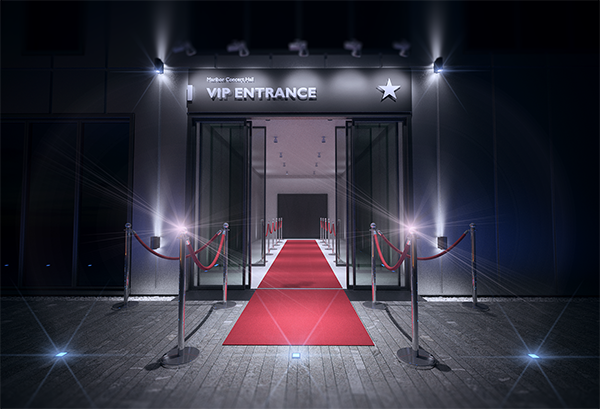“Success, it turns out, is a lot like a nightclub. There are always three ways in."
-Alex Banayan in The Third Door
In my second year of undergrad, I applied for almost 30 summer internships. Weeks went by and I heard nothing. Then, the rejection emails started pouring in.
“We had a large volume of applications from many qualified candidates, such as yourself, and it had not been an easy decision.”
However politely worded, it stung.
It stung even more when I learned that many of my peers secured spring and summer internships. One classmate’s uncle worked in a big bank who managed to fast track their application. Another was well-prepped for the interview by a cousin who works at a different branch of the same company. Another came top of the year and had a glowing CV - hard for a company to say no to.
I was convinced that I was doomed without the right connections. Ranking top of the year was extremely unlikely. Waking up one morning to discover a fairy godmother with connections was probably even more unlikely.
If you’ve ever felt like this, this newsletter article is for you. Yes, being brilliant and hardworking helps. Yes, having connections helps. But these are definitely not the only ways to get your dream job or climb the career ladder.
To understand, imagine that there’s a nightclub that everyone’s dying to get into…
The Night Club
Most people think there’s only one way to get into an exclusive nightclub: queue up outside the main entrance where the bouncers are guarding the doors.
But there are actually three ways to get into a nightclub, each represented by a different door.
The first door is the main entrance. The line to this door is long and it moves slowly. You get in through this door by being patient and playing by the rules. If you skip the line, people in the queue will get mad and things will get ugly.

The second door is the VIP entrance. It’s reserved for celebrities and billionaires. If you have the right connections (or status), you might get a ticket through the VIP entrance.

The third door is the side door. This is the door that allows ordinary people to get into an extraordinary nightclub (read: achieve extraordinary things) by skipping the line, finding hidden opportunities, and thinking outside the box. Maybe you volunteer to help the nightclub DJ or get chummy with a bouncer who can smuggle you in as part of the music crew.

I first heard of the “Third Door” from Alex Banayan’s eponymous book.
In his book, Alex interviews some of the most successful people on the planet, from Bill Gates to Lady Gaga. He learns that they didn’t just rely on hard work (the first door) or connections (the second door) for success. Instead, they found unconventional routes to achieve their breakthroughs (their “Third Door”).
The Third Door for Jobs
Just like a nightclub, there are often three paths to landing your dream job or climbing up the job ladder.
The First Door.
People who enter through the First Door tend to work extremely hard on perfecting the conventional application process. Just like how the First-Door nightclub goers are willing to stand in a queue for hours to get in, these First-Door job applicants spend months practicing for that job interview, perfecting their CV, rewriting their cover letter.
The First Door is the entrance that most people know of. This means that the First Door is too narrow to fit everyone coming in. The data reflects this too. Top consulting firms like McKinsey reportedly receive more than a million applications each year and hire less than 1% of them.
When there’s a large pool of qualified candidates, many deserving people don’t get in. So, although people who enter through the front door tend to be hard workers, the converse isn’t true (people who don’t make it through aren’t slackers).
The Second Door.
People who enter through the Second Door tend to have the right connections to help them move forward - like an uncle who’s a partner at your dream firm. They might pull some strings to land you an internship or even accelerate your full-time job application.
But not everyone has such connections, leaving many of us looking for another way in.
The Third Door.
Like people who enter through the First Door, people who enter through the Third Door need to be hard-working and talented. But they don’t need to rely on having exceptional talent (or privileged connections, like people who enter through the Second Door) to get in.
Instead, people who enter through the Third Door creatively tap into the “hidden job market” - jobs that aren't publicly advertised. Since not many people know about the hidden job market, this strategy allows them to get their foot in the door without competing with the large volume of highly qualified candidates.
How to find your Third Door
(1) “Dear X”
The first step to finding your third door is contacting the right people. There are three types of people to focus on:
The person you admire
The second-hand to that person
Other “weak ties” you might have
The person you admire
Be bold and reach out directly to that person you admire and/or want to work for.
Here’s an example from my workplace: When he was about to graduate from Cambridge University, Angus Parker (my manager) cold-emailed then-upcoming YouTuber Ali Abdaal. Angus expressed how much he liked Ali’s content and offered to help with Ali’s channel. Ali accepted and Angus started as a generalist - writing, researching, and editing videos. A few years later, Angus became the general manager of Ali’s company, which makes $5m in revenue per year.
The second hand to the person you email
Perhaps surprisingly, the “right” person isn’t always the main person you want to ultimately reach.
If you were to email Ali Abdaal today, the chances are he won’t respond. BUT someone with a lower profile and with a link to Ali might have the time and bandwidth to do so. For example, Angus or one of his team members.
Ali continues to get cold emails, of course, but the team as a whole also receives a lot of “free work” (like writing samples that can be used - see tip 3) from people who are interested in working for Ali. Some of these cold emails turned into freelancing opportunities for the sender.
Focus on your weak ties
When we think about connections, most of us focus on “strong ties” - family connections or close friendships. But research shows that “weak ties” - like an acquaintance you met at a conference or job fair - can be equally, if not more, helpful when looking for future job opportunities.
In his book, Alex shares the story of how Tim Ferris - author of The 4-hour Work Week - leveraged his weak ties to associate his name with their expertise. You can boost your credibility in the same way, by volunteering for credible nonprofits or writing for well-known publications.
(2) “I get you”
It’s now time to write to these people through cold emails, LinkedIn messages, or even meet in-person if you have a chance.
What do you say to them?
The first step is to build rapport in the first few lines by showing your knowledge of the other person’s goals, accomplishments, and struggles. In other words, you want to show them that “I get you”.
Here are some examples:
“I have a huge respect for how you’ve completely changed the pharmaceutical industry! I understand that the next step for you would involve solving <name of problem>.”
“Congrats on all the success you’ve had with <company>. In your recent podcast interview on <podcast show name>, you spoke about the need for <specific details on the challenge they’re facing> to take <company> to the next level.”
In his book, Alex explains how Bill Gates created a sense of “I get you”, leading to a deal with IBM that changed the trajectory of Microsoft:
In 1980, Bill Gates was trying to close a deal with IBM. But he faced a credibility problem. IBM was the world’s biggest tech company at the time. And Microsoft was an unproven startup led by a young-looking Bill Gates. He had to convince IBM execs that he was a serious player and knew his stuff.
Bill did all the research he could about IBM. He was able to go into the meetings armed with knowledge not only about his product but also about IBM. He overwhelmed the IBM execs with detailed and technical answers that they raised.
In other words, Gates was able to build rapport by showing he knew the inside out the IBM’s product, clients, fears, and desires
(3) “Here’s how I can help you”
Now that you’ve built rapport, it’s time to show what you can bring to the table.
The biggest mistake anyone can make in outreaches like these is asking for things rather than offering value.
You should focus on what you can give the other person. You shouldn’t focus on what you can get from that person.
So, ask yourself: what can I write or say to finish the following sentences?
“Here’s how I can help you: _____”
“I have a few ideas about how to solve <the problem mentioned in the opening paragraph> that I’d love to share with you. First, ____ Second, ____. Third, ____”
If you can bring something to the table and bring it for free, people are likely to be extremely eager to bring you on board.
(4) “If you're interested,…”
The last step is to make it easy for that person to respond to you.
Here are some things to think about:
Zoom call: Provide some potential times for a Zoom call in the coming weeks.
In-person meetings: Will you both be at the same conference or event in the future?
More info about your work: Where can you direct them to find out more about you and your work? Your LinkedIn page or personal website? Your portfolio?
A question for you
Whatever you’re aiming for today, ask yourself:
What does lining up for the First Door look like? What do I need to do to make it to the front of the queue? Is this the most effective way?
How can I be creative and find the Third Door? Who can I email or meet to express my interest and offer help? Who are the weak ties that I’ve been overlooking? Is there something I can volunteer for to show my value? How can I make it easy for people to respond to me and find out more about me?




